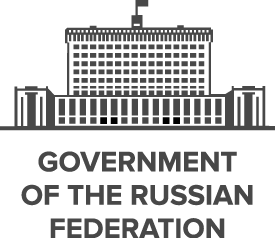Founded in the 12th century, the Principality of Muscovy was able to emerge from over 200 years of Mongol domination (13th-15th centuries) and to gradually conquer and absorb surrounding principalities. In the early 17th century, a new ROMANOV Dynasty continued this policy of expansion across Siberia to the Pacific. Under PETER I (ruled 1682-1725), hegemony was extended to the Baltic Sea and the country was renamed the Russian Empire. During the 19th century, more territorial acquisitions were made in Europe and Asia. Defeat in the Russo-Japanese War of 1904-05 contributed to the Revolution of 1905, which resulted in the formation of a parliament and other reforms. Repeated devastating defeats of the Russian army in World War I led to widespread rioting in the major cities of the Russian Empire and to the overthrow in 1917 of the imperial household. The communists under Vladimir LENIN seized power soon after and formed the USSR. The brutal rule of Iosif STALIN (1928-53) strengthened communist rule and Russian dominance of the Soviet Union at a cost of tens of millions of lives. After defeating Germany in World War II as part of an alliance with the US (1939-1945), the USSR expanded its territory and influence in Eastern Europe and emerged as a global power. The USSR was the principal adversary of the US during the Cold War (1947-1991). The Soviet economy and society stagnated in the decades following Stalin’s rule, until General Secretary Mikhail GORBACHEV (1985-91) introduced glasnost (openness) and perestroika (restructuring) in an attempt to modernize communism, but his initiatives inadvertently released forces that by December 1991 splintered the USSR into Russia and 14 other independent republics.
Following economic and political turmoil during President Boris YELTSIN's term (1991-99), Russia shifted toward a centralized authoritarian state under the leadership of President Vladimir PUTIN (2000-2008, 2012-present) in which the regime seeks to legitimize its rule through managed elections, populist appeals, a foreign policy focused on enhancing the country's geopolitical influence, and commodity-based economic growth. Russia faces a largely subdued rebel movement in Chechnya and some other surrounding regions, although violence still occurs throughout the North Caucasus.
Russia is a semi-presidential federation.
Members:
Resources
Displaying 876 - 880 of 1046Regional Law No. 88-ZS “On allotment of land parcels free of charge”.
This Regional Law establishes the modalities of allotment free of charge of land parcels of public and municipal land. It establishes maximum land area allotted free of charge as follows: (a) for farming in accordance with average regional rate validated by local self-government; and (b) for gardening – 0,1 ha.
Regional Law No. 16-ZS “On safe management of pesticides and agrochemicals”.
This Regional Law establishes legal grounds in the sphere of ensuring safe management of pesticides and agrochemicals with a view of ensuring protection of human health and environment. Citizens shall have the right to: (a) favourable environment free of hazardous factors that can have impact on human health; (b) full compensation of damages caused by violation of the legislation on transport, storage, trade and application of pesticides and agrochemicals; and (c) access to reliable information on application of pesticides and agrochemicals.
Regional Law No. 196-OZ “On representatives of indigenous peoples”.
This Regional Law establishes legal status and competence of authorized representatives of indigenous peoples with a view of ensuring traditional rights of indigenous peoples, traditional environment and traditional way of life thereof. Authorized representatives of indigenous peoples can be non-governmental entities, associations or natural persons.
Regional Law No. 318-OZ “On protected areas”.
This Regional Law classifies protected areas as follows: (a) natural parks; (b) state nature reserves; (c) nature monuments; (d) dendrological parks and botanical gardens; (e) healthcare areas and spas; and (f) traditional nature management areas of indigenous peoples. Protected areas of regional significance shall be property of the regional administration. Inclusion of land parcels pertaining to natural and legal persons on condition of ownership, tenancy or lease into protected areas category shall be allowed. Boundaries of protected areas shall be mapped.
Regional Law No. 60-ZS “On protected areas”.
This Regional Law regulates relations in the sphere of organization, protection and management of protected areas. It classifies protected areas as follows: (a) state nature reserves, including biosphere reserves; (b) national parks; (c) nature monuments; (d) dendrological parks and botanical gardens; and (e) healthcare areas and spas. Protected areas of regional significance shall be property of the regional administration and shall be managed by public administration.


